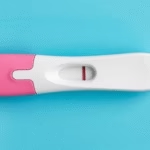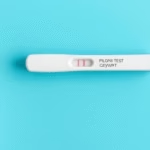We will be talking about how does implantation bleeding look like. Implantation bleeding occurs when a fertilized egg attaches itself to the lining of the uterus. This process can cause light spotting or bleeding, which may be one of the very first signs of pregnancy for many women. This bleeding is different from menstrual bleeding and usually happens a few days to a week before a woman’s expected period. It is important to understand that implantation bleeding is completely normal and should not be a cause for concern. Knowing how it looks and when it occurs can help you determine whether you might be pregnant. In the following sections, we will provide more information about implantation bleeding, its appearance, causes, and its difference from other types of bleeding, as well as other related topics.
What is Implantation Bleeding?
Implantation bleeding signifies the early stages of pregnancy. At the time of implantation, which typically occurs 6 to 12 days after conception, you may experience light spotting as the embryo embeds into the uterine lining. This bleeding usually presents as pink or brown discharge—colors darker than typical menstrual flow. The amount of blood is generally very light, often unnoticeable except for when wiping after using the bathroom. Importantly, this discharge is often a sign that the pregnancy is progressing normally, although any changes in bleeding should be discussed with a healthcare provider.
How Does Implantation Bleeding Look Like?
Understanding how implantation bleeding looks like can help you identify it correctly. Typically, it is much lighter than a normal menstrual period, often described as light pink or brown in color. The bleeding may last a few hours or up to three days. Unlike period blood, which is bright red and often accompanied by cramps, implantation bleeding is usually less intense, with very mild or no accompanying pain. Most women may not even notice it unless they are actively monitoring their cycles.
Timing of Implantation Bleeding
For many women, implantation bleeding occurs about a week after conception, closer to the time when their menstrual cycle is expected. This timing can vary significantly, with some women experiencing it earlier or later. It’s essential to track your cycle accurately so you can pinpoint any changes, especially if you’re trying to conceive. If you suspect you are pregnant and experience spotting, understanding the timing can also help alleviate any anxiety about abnormal bleeding.
Differences Between Implantation Bleeding and Period
It is crucial to recognize the differences between implantation bleeding and a regular period. Typically, a menstrual period is heavier, lasts longer (about 3-7 days), and often includes cramps. In contrast, implantation bleeding is lighter, shorter, and often accompanied by no or very mild discomfort. Understanding these distinctions can help alleviate confusion about early signs of pregnancy versus normal menstrual symptoms.
Causes of Implantation Bleeding
The primary cause of implantation bleeding is the attachment of the embryo to the uterine lining. This process can cause minor damage to the tissue and blood vessels, leading to light spotting. Other factors that can contribute to similar symptoms include hormonal changes, cervical irritation, or complications from birth control methods, such as an IUD. It is vital to monitor the body’s signals and consult with a healthcare professional if there are any alarming symptoms or persistent bleeding.
When to Consult a Doctor
While implantation bleeding is generally considered normal, you should consult a doctor if you experience heavy bleeding, severe cramping, or any other unusual symptoms. These could be signs of a miscarriage or ectopic pregnancy. Communication with your healthcare provider about any concerns is crucial for your health and that of your baby during early pregnancy.
Home Pregnancy Tests and Implantation Bleeding
Understanding how does implantation bleeding relate to home pregnancy tests is vital. Most home pregnancy tests are designed to detect the hormone hCG, which is produced shortly after implantation occurs. If you suspect you have experienced implantation bleeding, waiting for a few days before taking a home pregnancy test can yield more accurate results. Testing too early can lead to a false negative, so patience is key during this waiting period.
Tracking Your Cycle
Keeping a detailed record of your menstrual cycle and any irregularities is essential, especially if you’re trying to conceive. Use apps or calendars to note the timing, texture, and color of any spotting. This information can be extremely helpful for you and your healthcare provider in understanding your cycle and diagnosing any potential issues, including whether the spotting might be implantation bleeding.
Other Types of Bleeding in Early Pregnancy
While implantation bleeding is a common occurrence, it is essential to be aware of other types of bleeding that may occur during early pregnancy. These may include bleeding due to hormonal changes, subchorionic hemorrhage, or miscarriage. Knowing the differences between these types of bleeding helps differentiate between healthy pregnancy signs and those needing medical attention.
Conclusion
Understanding how does implantation bleeding look like is an essential aspect of tracking pregnancy signs. Recognizing its light pink or brown color, short duration, and mild nature can help differentiate it from menstrual bleeding. Timing plays a crucial role, with implantation bleeding occurring roughly a week after conception. Awareness of the differences between implantation bleeding and a normal period is important, as well as understanding the causes and when to consult a healthcare provider. Tracking your cycle can provide valuable insights into what is happening in your body, especially as you navigate early pregnancy.
If you experience unusual bleeding or discomfort, always prioritize your health by consulting a healthcare provider. Remember, while implantation bleeding is a normal occurrence, your well-being should come first.
Frequently Asked Questions
1. How long does implantation bleeding last?
Implantation bleeding typically lasts a few hours to three days, though it may vary for different women.
2. Can implantation bleeding be dark red?
Implantation bleeding is usually light pink or brown; dark red bleeding can indicate something else and should be investigated.
3. What should I do if I experience heavy bleeding?
If you experience heavy bleeding or severe cramping, contact a healthcare provider immediately.
4. How soon can I take a pregnancy test after experiencing implantation bleeding?
It’s best to wait at least 3-5 days after implantation bleeding before taking a home pregnancy test for accurate results.
5. Is implantation bleeding a guarantee of pregnancy?
While it is a sign of pregnancy, not all women experience implantation bleeding, and its absence does not indicate a lack of pregnancy.
Further Reading
What Type of Psychotherapy Is Best for Anxiety?







